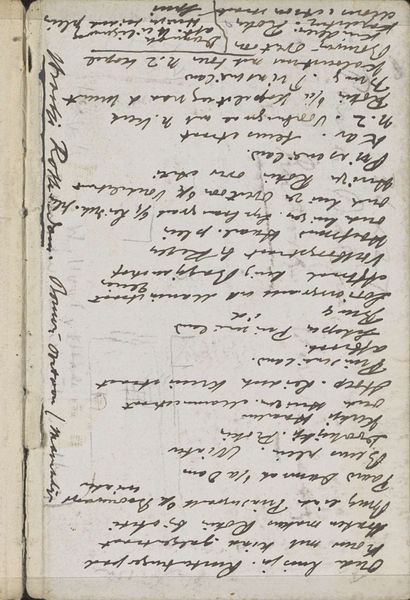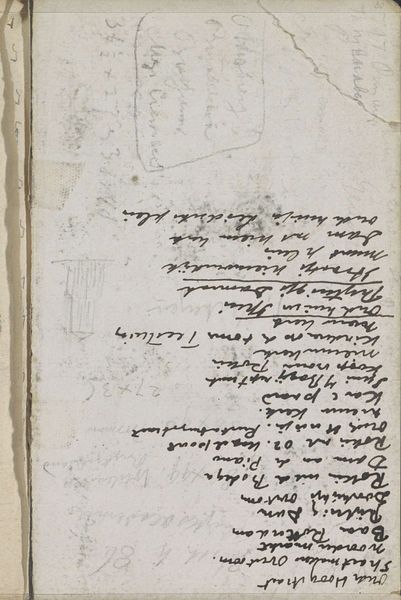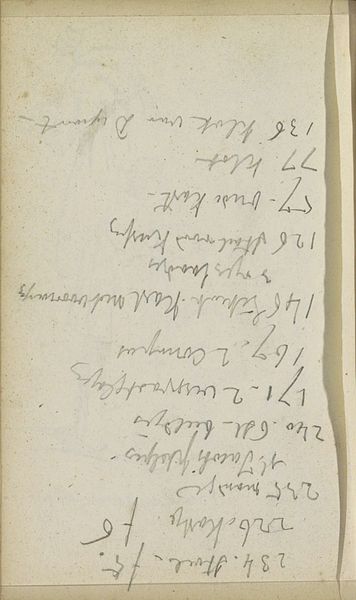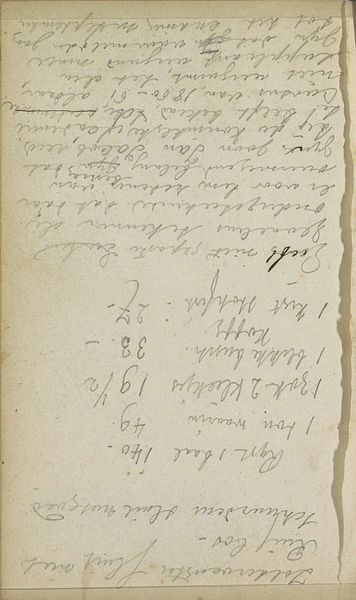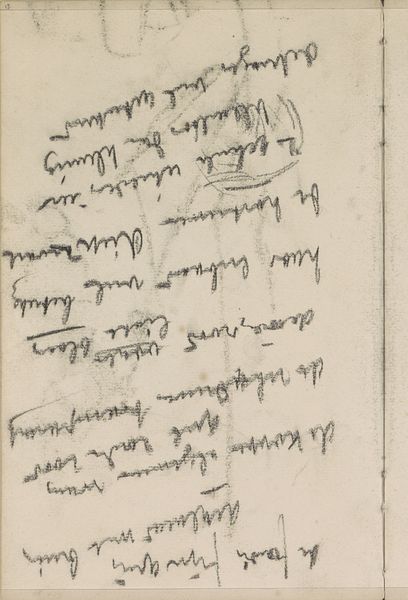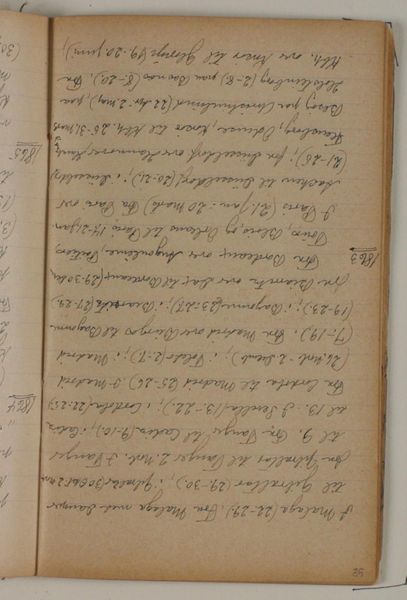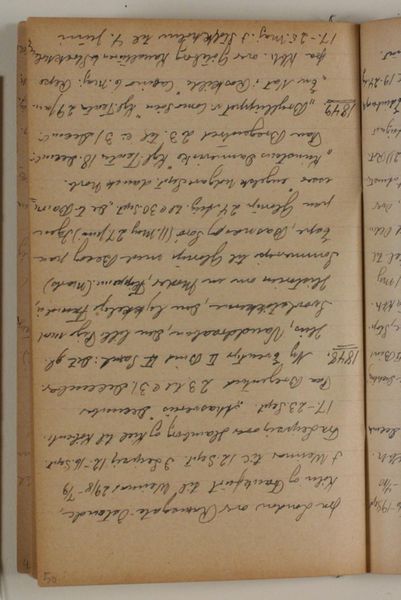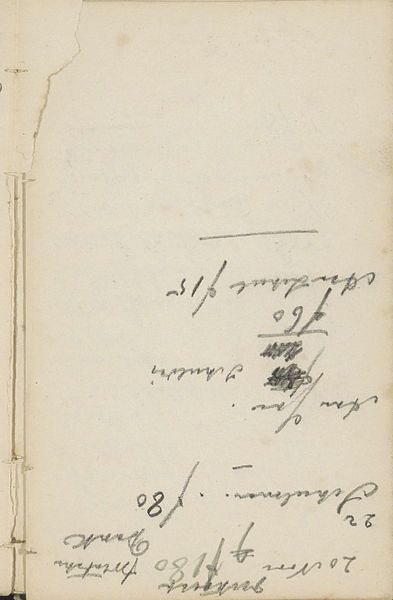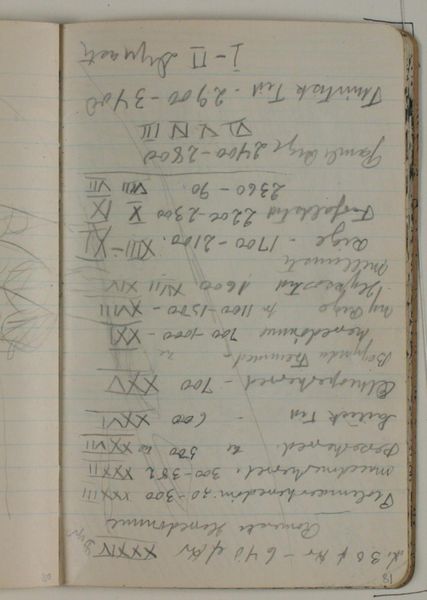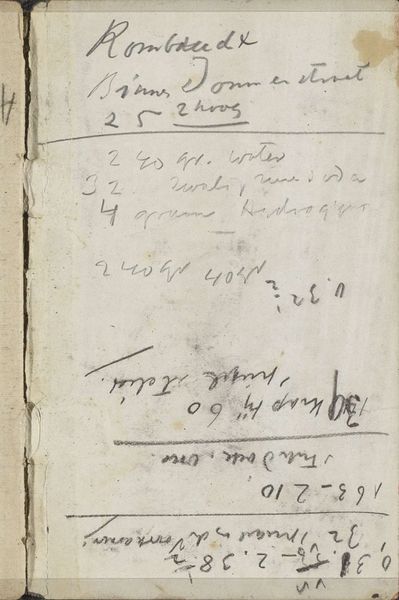
drawing, paper, ink
#
drawing
#
hand written
#
hand-lettering
#
dutch-golden-age
#
hand drawn type
#
hand lettering
#
paper
#
personal sketchbook
#
ink
#
hand-written
#
hand-drawn typeface
#
sketchbook drawing
#
sketchbook art
#
small lettering
Copyright: Rijks Museum: Open Domain
Curator: George Hendrik Breitner’s "Annotaties," dating from 1886 to 1908, offers a fascinating glimpse into the artist's mind. This ink drawing on paper, currently housed at the Rijksmuseum, showcases a page from what appears to be a personal sketchbook. What are your first impressions? Editor: Raw, unedited... Immediate. I see a flurry of handwritten text, almost spilling off the page, a kind of visual record. There's an incredible intimacy to this kind of unmediated thought process. I want to understand the materials he has available and how they reflect the social moment he lives in. Curator: Precisely. This sketchbook isn't intended for public consumption. Breitner, often associated with capturing the gritty realities of Amsterdam life, is revealed here through a much more private lens. The handwriting, while legible, feels hurried, suggesting spontaneity and unfiltered expression. In essence, it reads as a raw manifestation of an artist's thought, reflecting a certain urgency. Editor: Considering Breitner’s place within the art market and Dutch society at the time, this raw glimpse into his practice humanizes his labor. We’re seeing the physical act of creating and planning—it’s a tangible record of his work. Were sketchbooks common for artists like him? What type of paper and ink are used and how accessible would it be for working class artists at that moment? Curator: Sketchbooks served varying roles for artists during that era. Some were academic tools for studying form, others became repositories of personal observations, and of course, in Breitner's case, "Annotaties" could encompass all these functions. We need to consider the availability of materials and their cost when assessing the final artwork we can see hanging on walls in museums. His annotations serve as more than mere artistic preparation. These notes help situate the labor in the social context of a booming city during that moment of unprecedented expansion. Editor: I agree. The very act of committing thoughts to paper is a form of resistance, too. Artists using those very materials to defy class, gender, racial and other forms of normative representation is in itself a rebellion against the norm and that comes across quite viscerally to me as I examine those scribbled thoughts. It is refreshing! Curator: Absolutely. Studying Breitner and the circumstances around "Annotaties" underscores that a painting is much more than brushstrokes and pigment on canvas. Editor: For me, focusing on its social underpinnings helps dismantle the myth of the lone genius to focus on materials, techniques and labor. A good note to finish. Thank you!
Comments
No comments
Be the first to comment and join the conversation on the ultimate creative platform.

